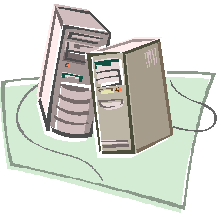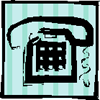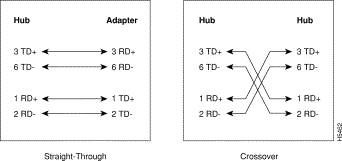| RJ-45 Cables | Home |

Certifications

Cisco

Downloads

IP

PC

Protocols

RemoteAccess

Security

Telecommunications

Tools

Unix

Web
RJ-45 Cables
There are 3 main types of RJ-45 cables that you will run across in networking, both LAN and WAN.
-
Straight-through
-
Crossover
-
Rolled

To identify the RJ-45 cable type, hold the two ends of the cable next to each other so you can see the colored wires inside the ends.
Examine the sequence of colored wires to determine the type of RJ-45 cable, as follows:
-
Straight-through — the colored wires are in the same sequence at both ends of the cable.
-
Crossover — the first (far left) colored wire at one end of the cable is the third colored wire at the other end of the cable.
-
Rolled — the colored wires at one end of the cable are in the reverse sequence of the colored wires at the other end of the cable.
Pinouts
Below is a diagram comparing a straight-through versus a cross-over cable.

| White/Orange | White/Blue | |
| Orange | Green | |
| White/Blue | White/Orange | |
| Blue | Blue | |
| White/Green | White/Green | |
| Green | Orange | |
| White/Brown | White/Brown | |
| Brown | Brown |
The following 3 tables show the various pin-outs for each of the 3 major types of RJ-45 cables.
|
Signal |
Pin |
Pin |
Signal |
|---|---|---|---|
|
Tx+ |
1 |
1 |
Tx+ |
|
Tx- |
2 |
2 |
Tx- |
|
Rx+ |
3 |
3 |
Rx+ |
|
- |
4 |
4 |
- |
|
- |
5 |
5 |
- |
|
Rx- |
6 |
6 |
Rx- |
|
- |
7 |
7 |
- |
|
- |
8 |
8 |
- |
|
Signal |
Pin |
Pin |
Signal |
|---|---|---|---|
|
Tx+ |
1 |
3 |
Rx+ |
|
Tx- |
2 |
6 |
Rx- |
|
Rx+ |
3 |
1 |
Tx+ |
|
- |
4 |
4 |
- |
|
- |
5 |
5 |
- |
|
Rx- |
6 |
2 |
Tx- |
|
- |
7 |
7 |
- |
|
- |
8 |
8 |
- |
|
Signal |
Pin |
Pin |
Signal |
|---|---|---|---|
|
- |
1 |
8 |
- |
|
- |
2 |
7 |
- |
|
- |
3 |
6 |
- |
|
- |
4 |
5 |
- |
|
- |
5 |
4 |
- |
|
- |
6 |
3 |
- |
|
- |
7 |
2 |
- |
|
- |
8 |
1 |
- |
Other Cabling Types
In addition to Ethernet, RJ-45 cable is also used for WAN connections. The diagram below shows some other types of crossover cables and compares them to Ethernet.

Last modified: October 26 2003.